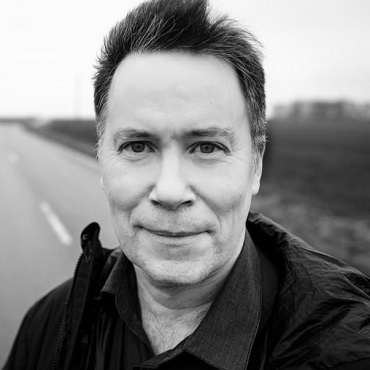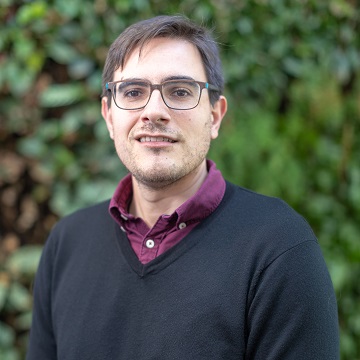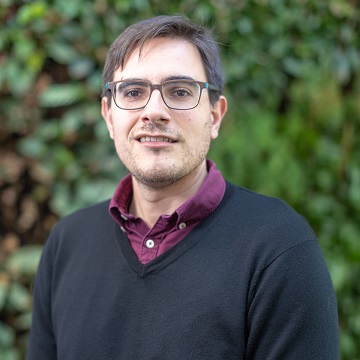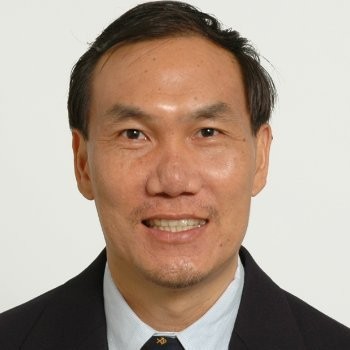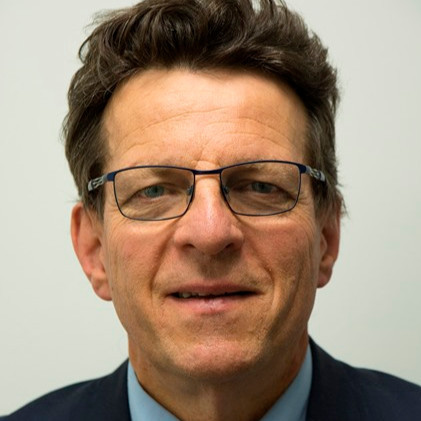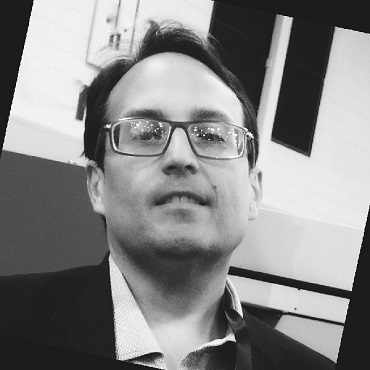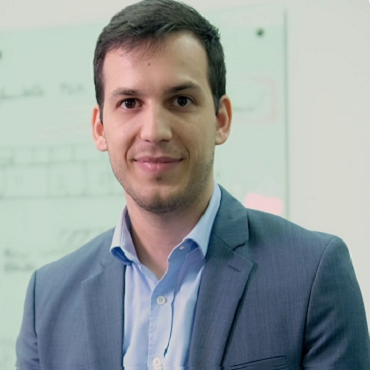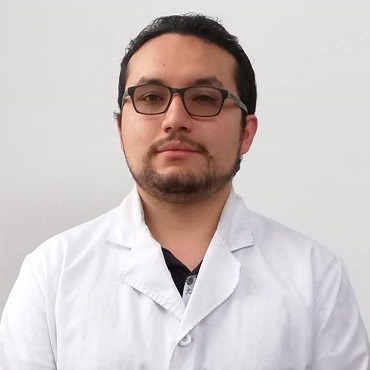Scientific Program
Keynote Session:
Title: 5D printing of nano-laden fibre aerogel
Biography:
Ph.D. Ruben Foresti Postdoctoral Researcher in applied medical technical sciences at University of Parma. Research field addressed in 3D, 4D and 5D processes for digital fabrication of biomedical devices and customized scaffolds. PhD in Industrial Engineering at University of Parma. Design and implementation of additive manufacturing systems for biomedical and food applications, including software and 3D model design. Expertise in rapid prototyping of automated systems with remote control including the design and the software development, electrical parts and mobile application. MSc. in Engineering Management and BSc. in Electronics Engineering. Co-founders of M3datek, academic spinoff.
Abstract:
Title: Design for AM – the key to the industrialization of additive manufacturing
Biography:
Professor Olaf Diegel is an educator and a practitioner of additive manufacturing and product development with an excellent track record of developing innovative solutions to engineering problems. In his role as professor of additive manufacturing, in the faculty of engineering at the University of Auckland, in New Zealand, he is heavily involved in all aspects of additive manufacturing (AM). He is also one of the principal authors of the annual Wohlers Report, considered by many to be the bible of AM. His current main area of research expertise is in design for AM. In his consulting practice he develops a wide range of products for companies around the world. Over the past three decades he has developed over 100 commercialized new products including innovative new theatre lighting products, security and marine products and several home health monitoring products and, for this work, has received numerous product development awards.
Abstract:
Many industries approach additive manufacturing (AM) as a drop-in replacement for conventional manufacturing technologies. This approach, however, does not fully utilize the unique possibilities that additive processes offer. For over thirty years, AM has been extensively used as a rapid prototyping technology. When using the technologies for manufacturing, however, it should be noted that AM does not remove all manufacturing restrictions. It, instead, replaces them with a different set of design considerations that designers must take into account if they wish to successfully use the technologies to add value to their products. Otherwise AM can easily become a slow and uneconomical way of manufacturing products or parts.
It is also of great importance to understand that, despite much of the marketing hype over the past few decades, AM is not an “easy” technology that can make absolutely anything. It requires a good understanding of the different technologies and how to design for them. In fact, printing parts in metal, for example, can be downright hard, and the use of AM to manufacture metal parts should only be considered if the process truly adds value to the product.
This talk attempts to impart some practical guidance on the thought process required to design parts that gain the maximum benefit from what AM can offer.
Title: Damage modelling, detection and identification in composite structures
Biography:
Dimitrios Chronopoulos,Associate Professor, University of Nottingham,UK. He has done his PhD: Prediction of the vibroacoustic response of aerospace composite structures in a broadband frequency range at Ecole Centrale de Lyon, France.He has done his Postdoctoral Researcher in structural damping technologies for launch vehicles at Les Mureaux, France.FELLOWSHIPS: Exceptional academic performance award (Personal Development and Performance Review (PDPR) Rating 1-Exceeding Expectations), Faculty of Engineering/ University of Nottingham, UK.
Abstract:
Commercial and military aircraft such as the V-22 Osprey are being constructed using substantial amounts of advanced light-weight composite materials. Impact damage as well as fatigue stress can cause internal delaminations leading to catastrophic part failure without prior visible warning. A reliable health monitor system can enable condition-based maintenance. This can significantly reduce life cycle costs by minimizing inspection time and effort, and by extending the useful life of new and aging aerospace structural components. In this paper we describe a smart structures approach for the detection and assessment of damage in critical composite structures. An array of piezoelectric transducers is attached to the structure for both actuation and sensing. The system actively interrogates the structure with wideband chirp excitation of multiple actuators. Statistical analysis of the changes in the vibration response is used to detect, localize, and assess the severity of damage in the structure. Damage is indicated when the vibration signatures differ from a known baseline condition. Pattern recognition techniques are employed to distinguish damage responses from those due to benign changes such as temperature or loading variations. This model-independent damage detection approach can be applied without extensive algorithm training. Tests were conducted in the fatigue test facility at Bell Helicopter on the V-22 pendulum yoke. Results presented here demonstrate that vibration signature analysis is a viable technique for in-situ damage detection of advanced composite aircraft components
Oral Session 1:
- Oral Sessions I

Chair
Dimitrios Chronopoulos
Associate ProfessorUniversity of Nottingham, UK
Title: Damage modelling, detection and identification in composite structures
Biography:
Dimitrios Chronopoulos,Associate Professor, University of Nottingham,UK. He has done his PhD: Prediction of the vibroacoustic response of aerospace composite structures in a broadband frequency range at Ecole Centrale de Lyon, France.He has done his Postdoctoral Researcher in structural damping technologies for launch vehicles at Les Mureaux, France.FELLOWSHIPS: Exceptional academic performance award (Personal Development and Performance Review (PDPR) Rating 1-Exceeding Expectations), Faculty of Engineering/ University of Nottingham, UK.
Abstract:
Commercial and military aircraft such as the V-22 Osprey are being constructed using substantial amounts of advanced light-weight composite materials. Impact damage as well as fatigue stress can cause internal delaminations leading to catastrophic part failure without prior visible warning. A reliable health monitor system can enable condition-based maintenance. This can significantly reduce life cycle costs by minimizing inspection time and effort, and by extending the useful life of new and aging aerospace structural components. In this paper we describe a smart structures approach for the detection and assessment of damage in critical composite structures. An array of piezoelectric transducers is attached to the structure for both actuation and sensing. The system actively interrogates the structure with wideband chirp excitation of multiple actuators. Statistical analysis of the changes in the vibration response is used to detect, localize, and assess the severity of damage in the structure. Damage is indicated when the vibration signatures differ from a known baseline condition. Pattern recognition techniques are employed to distinguish damage responses from those due to benign changes such as temperature or loading variations. This model-independent damage detection approach can be applied without extensive algorithm training. Tests were conducted in the fatigue test facility at Bell Helicopter on the V-22 pendulum yoke. Results presented here demonstrate that vibration signature analysis is a viable technique for in-situ damage detection of advanced composite aircraft components
Title: Sustinable 3D Printing In Manufacturing and Construction
Biography:
Dr Tan Ming Jen attended Anglo-Chinese School and Anglo-Chinese Junior College, Singapore and received both his B.Sc (Eng.) and Ph.D. from The Royal School of Mines, Imperial College, London. He was Japan Society for the Promotion of Science (JSPS) Fellow at Kyoto University in 1991, Science & Technology Agency (STA) Fellow at the Mechanical Engineering Laboratory (A.I.S.T., M.I.T.I.), Tsukuba, Japan 1992-93, Visiting Scientist at Columbia University (2003) and Fulbright Scholar (2004) at both UCLA and Northwestern University in the U.S. Dr Tan has more than 200 publications in various international journals and also has more than 150 publications in international conference proceedings and book chapters. His research has over 5000 citations (Source: Scopus 2018). To date he has attracted over S$90 million research and development funds from various government funding agencies, industries and international sources as Principal Investigator. He has been consulted regularly by local industries for solving material problems and providing solutions. He is up to recently, the Programme Director (Building & Construction) at the Singapore Centre of 3D Printing (SC3DP), and currently Director of the HP-NTU Digital Manufacturing Corporate Lab
Abstract:
Additive manufacturing can greatly increase a manufacturers efficiency. When using expensive materials like titanium, manufacturers that use 3D printing can save big. Being able to build the component from the bottom up gives manufacturers the unique ability to only use the amount of material that is absolutely necessary. Furthermore, manufacturers can create complex and lightweight components that were not possible with subtractive manufacturing. Having the ability to create complex parts lets manufacturers build a product that would usually consist of multiple parts and turn it into one solid product. Not only can this improve the overall strength of the product, but it requires less time and energy than manufacturing the separate components and then fastening them together. Also, aerospace manufacturers have found that they can produce hollow structures that were not possible with traditional manufacturing techniques. 3D printing uses less material as well as reducing the weight of the overall product. Less weight on an aircraft means less fuel consumed.
Title: XXL 3D Printing
Biography:
Benoit Furet is the Professor at the IUT of NANTES - Researcher at LS2N - Project Manager Innovation-Business Relations - Responsible for "Robotics and Processes" competence unit of CAPACITES SAS - Active member of AIP-PRIMECA - Expert at EMC2 competitiveness cluster - Project leader Batiprint3d. He has research inerest on Mechanical engineering - Materials and Implementation - Composites - High Speed ​​Machining - Process Monitoring - Intelligent control of production processes - Production robotics - Additive Manufacturing.
Abstract:
XXL is a professional 3D printer with a big building area which uses FFF (Fused Filament Fabrication) technology to realize objects, models and functioning prototypes with the best printing quality on the biggest building volume. Sharebot XXL is a 3D printer dedicated to professional users that combines quality, precision and the biggest printing volume available on the market, 750x250x200 mm. The orizontal development of the printing plate allows to realize big size prototypes in one piece, optimizing the professional workflow. XXL has one extruder and the heated printing plate: it’s optimized to print different materials dedicated to professional applications. Printing process management is easy, intuitive and it can be used in different professional workflow. Thanks to the LCD screen, once the SD card is inserted, the user can manage the entire process and all the setting inside the slicing software. The control knob gives access to the printer menu (both before and during the printing process).
Title: Additive Manufacturing, Processes and ASTM/ISO Standards
Biography:
Fabio Sant’Ana has Precision Mechanics degree and Business Administration Bachelor’s, he has 29 years’ experience in helping companies to acquire and take full advantage of 3d Machining and Additive Manufacturing Equipment. Entrepreneur and knowledge avid is member of standards organizations ASTM F42 Additive Manufacturing, ABNT CEE-261 Manufatura Aditiva e ABNT CB-26 Odonto-Médico-Hospitalar . CAD/CAM, Surface Modelling and EBM specialist by Arcam AB, Sweden and Machining Specialist by Willemin-Macodel , Switzerland, he is passionate in connect people and companies to the right tools to accomplish the mission.
Abstract:
Present the audience to the Additive Manufactured standardized process by ISO ASTM TC261 / F42 Joint Committee. Present what is Additive Manufacturing and its difference against 3d printing. Additive Manufacturing History and main milestones together with a Personal Journey in the technology, Additive manufacturing process as described in ASTM ISO 52900 and ASTM ISO 17296 : vat photo polymerization : VPP , sheet lamination : SHL, material jetting : MJT, material extrusion : MEX, directed energy deposition: DED, binder jetting : BJT, powder bed fusion : PBF . Qualification and Characterization Standards for a Additive Manufacturing based on ASTM ISO 17296, including quality control , performance and specifications for test methods and materials control. Market differentiation by processes, materials and manufacturers accordingly with public studies from 3dhubs and AMPOWER. Presenter is Member of ASTM F42 Member number 2066434 / ABNT CB026 and CEE261 Member number 578499 and ISO TC261 HOD Brazil for both 2019 TC261 International Meetings (Auburn, USA and Senlis, France)
Oral Session 2:
- Oral Sessions II
Title: 3D printed Spare Parts: from good idea to reality in the field
Biography:
Paul Guillaumot is the founder and CEO of Spare Parts 3D, company specialized on on-demand production for spare parts via additive manufacturing operating in various sectors including Home Appliance, Marine, Oil and Gaz, General industry. Paul firmly believes that additive manufacturing, also known as 3D printing, is the leading driver of the 4th industrial revolution, enabling just-in-time, distributed and mass-customized production. He started his career at Oliver Wyman, as strategy consultant and left upon the opportunity to join the spin-off called Theano Advisors. During his years in consulting, he got actively involved in many projects, including major transformation of international industrial companies such as Airbus or the French national railway Company, SNCF. Holding a Master Degree in Mechanical and Industrial Engineering from Arts et Métiers Paristech (France), Paul has an extensive knowledge in product development and manufacturing processes.
Abstract:
On-demand and distributed manufacturing of spare parts is considered in the Additive Manufacturing industry as one of the largest potential industrial application. Spare parts are critical for equipment repairs, however with the traditional centralized production model, it is impossible to always have the right spares, at the right place, at the right time. This is especially true for long tails or old spare parts, for which keeping inventory doesn’t make sense due to too low demands and prolonged stay in inventory. Additionally, supplying this parts from the OEM or distributors happen to be costly and to take long lead time. On that postulate, the advantage of AM is clear, but to make it actually happen? Which parts can be produced by Additive Manufacturing? How to build the business cases? How to scale-up a “transfer to AM” process over hundred thousand of spares? Won’t the engineering investment to transfer an SKU to AM kill the business case considering the high-mix/low volumes characteristics of long tails? All that questions will be addressed by Paul Guillaumot, CEO of Spare Parts 3D, company specialized in providing solutions to the aftermarket sector for producing on-demand and locally spare parts thanks to the use of AM.
Title: Biomimetic 3D bioprinting of cellular laden nanocomposite scaffold through co-axial and core-co-cultured structure
Biography:
Fahimeh shahabipour is a PhD student in Medical Biotechnology at Pasteur Institute of Iran, Tehran. She spent 8 months In MIT-Harvard division as a research scholar in 3D bioprinting and 3 months at Radboud University in the Netherlands to conduct a project. Her research focused on the application of 3D bioprinting in the fabrication of 3D biomimetic bone graft.
Abstract:
There is a need to recapitulate the native complexity of bone structure within engineered 3D structures with tailored biological and mechanical properties. In this study, we suggest an innovative cell-printing process, supplemented with core/shell nozzle and co-cultured/mono-cultured methods, to achieve 3D osteon-like structures through cell-laden bioinks using an extrusion-based 3D bioprinter in one-step. In this study, vascularization promoting and osteogenic bioinks were developed based on different concentration of GelMA-alginate hydrogels with the incorporation of hydroxyapatite nanoparticles. These hydrogels were chosen due to their suitable mechanical stability, swelling ratio, and printability. To obtain a core/shell osteon-like structure (CSBP), we used a vascularization bioink combined HUVECs in the core region, and used osteogenic- MC3T3-E1 cells-laden bioinks in the shell region. Pure gelatin was concentration in all bioinks to support both of core and shell structures during 3D bioprinting. Core-co-cultured osteon-like structure (CCBP) was fabricated through co-culturing of HUVECs and MC3T3 cells within bioink in the core region. Mono-cultured printed structure composed of single cell lines served as a control. The fabricated 3D-core-cocultured of HUVECs-MC3T3 cells showed significantly higher cell viability (84%) compared to that (78%) of a 3D-core/shell of HUVECs/MC3T3 cells. Both fabricated structures exhibited outstanding cell viability in comparison with (65%) of mono-cultured 3D cell-laden scaffold (control). In addition, significant increases in osteogenic properties were observed in the co-culture samples versus the mono-culture controls. We demonstrated that both co-culture configurations were able to promote mineral deposition in the absence of exogenous osteogenic factors. Although the CSBP configuration displayed less viability than CCBP, this structure still exhibited good osteogenic and angiogenic properties. In conclusion, this investigation provided highlighted the potential of both structures as biomimetic bone scaffolds for complex bone tissue and other tissue engineering application.
Title: Additive manufacturing applied in parallel architecture machine
Biography:
Sebastian Matamoros will completed his degree at the age of 25 years from National University of Colombia. He is a researcher at Experimental Factory Laboratory (LabFabEx by its acronym in spanish) focus at additive manufacturing and desing with photopolymer and ceramic materials. He has published 2 papers in meetings in Colombia and a scientific magazines.
Abstract:
The following research are focused in take an old router machine and adapt it for ceramic materials additive manufacturing. The lining of it is improve the small or medium industry that by any reason can’t get new high-end capabilities machinery but has old machinery that can be improved or repowered adding some other manufacturing technologies. Following this idea, the laboratory has a parallel CNC router built in 2006 with an unsupported hardware (too old) and software with limited capabilities, the followed document show how is made the 3d ceramic printing capabilities repowered to this machine under single minutes exchange die (SMED) paradigm. Also, will show the software adjustment made and the following calibration of all the variables concerned at this investigation. This development can also be use in the petrochemistry industry to make ceramic pellets that can be used to oil refinement.
Title: Development of a process chain for the manufacturing of complex ceramic components by means of Fused Deposition Modelling
Biography:
Bliedtner, J. is Professor for Production Engineering and Production Automation at Ernst Abbe University of Applied Sciences. Götze, K. is a scientific assistant and made her PHD in 2012 at Technical University Ilmenau. Ongom-Along, P. is a scientific assistant at Ernst Abbe University of Applied Sciences Jena. Kerber, A. is CEO of the company Siceram. He made his PHD in 1984. Krause, H. is CEO of the company Portec. He is a mechanical engineer and an expert in the field of 3D-printing
Abstract:
The article introduces the additive manufacturing of components made of high-performance ceramics, especially of silicon carbide, silicon nitride, aluminium oxide and zirconium oxide. The entire process chain from material composition over filament manufacturing, 3D-print and further processing to the ready to use ceramics component was subject of the investigations. The work focussed on the development and processing of ceramics filaments. They can be processed on different 3D-print systems. This development was tested on an extruder system with an installation space volume of 200x200x250 mm3. The feedstock has to be suitable to be turned into a printable filament by means of a 1-screw extruder for which a sufficient flexibility for winding and a minimal tensile strength are necessary. The flexibility was characterised by a minimal bending radius at which the filament does not break yet. The material development included the harmonisation of the organic components in terms of composition and amount of the ceramic powder. Filaments with diameters of 1.75 and 2.85 mm were provided. A steady material discharge is necessary in order to process the two very different source materials (ceramics and plastic) by means of the FDM-procedure. This requires the homogeneous heating of the filament. The homogeneity directly affects the achievable component quality. Result is a material-adjusted viscosity-temperature controlled process for the processing of the ceramic filaments. First applications which were investigated and successfully realised with the new process chain are shown.
Â


